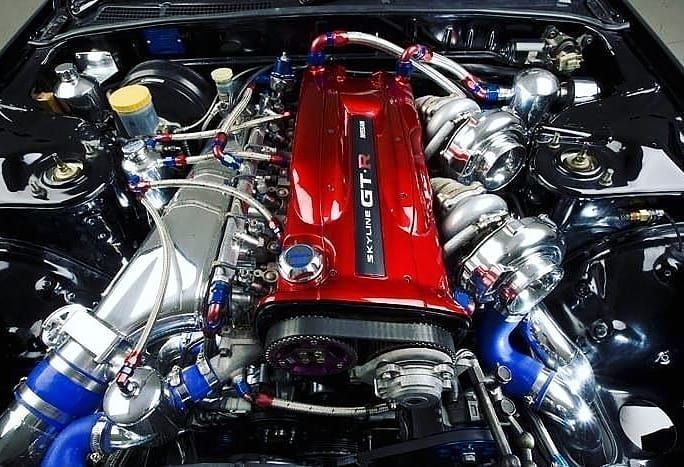ClickHouse is a column-oriented database management system (DBMS) developed by Yandex for online analytical processing (OLAP) and high-performance data warehousing. It is known for its ability to handle large amounts of data and its high-performance query execution.
ClickHouse supports several different database engines, each with its own strengths and use cases. Here are a few examples:
- MergeTree engine: This is the default engine used in ClickHouse and is designed for OLAP workloads. It uses a combination of a merge tree and a log-structured merge tree (LSM-tree) to achieve high write and read performance. It also supports data compression and incremental data updates.
For example, imagine a retail store that wants to store and analyze its sales data. The table can have columns for product ID, purchase date, customer ID, and purchase amount. The data can be partitioned by purchase date and sorted by customer ID, allowing for efficient querying of sales data by date and customer. In this scenario, the MergeTree engine would be an excellent choice as it can handle large amounts of data and provide fast query performance for OLAP workloads.
- ReplacingMergeTree engine: This engine is similar to the MergeTree engine but with the added ability to handle updates and deletions to existing data. It is useful for scenarios where data is frequently updated and deleted.
For example, imagine a website that wants to store and analyze its user data. The table can have columns for user ID, registration date, email, and username. The data can be partitioned by registration date and sorted by user ID, allowing for efficient updates and deletions to user data as well as querying by registration date and user ID. In this scenario, the ReplacingMergeTree engine would be an excellent choice as it can handle large amounts of data, provide fast query performance, and support updates and deletions to existing data.
- CollapsingMergeTree engine: This engine is designed for use cases where there are many duplicate rows in the data. It collapses duplicate rows into a single row and stores the count of duplicates. This can help save space and improve query performance.
For example, imagine a company that wants to store and analyze log data from its servers. The table can have columns for server ID, log timestamp, and log message. The data can be partitioned by log timestamp and sorted by server ID, allowing for efficient querying of log data by timestamp and server. In this scenario, the CollapsingMergeTree engine would be an excellent choice as it can collapse duplicate log messages and save space while still providing fast query performance.
- AggregatingMergeTree engine: This engine is designed for use cases where data needs to be aggregated in real-time. It supports group-by and aggregate functions such as SUM, AVG, and COUNT. It is useful for scenarios such as real-time analytics and monitoring.
For example, imagine a company that wants to store and analyze its website traffic data. The table can have columns for website URL, date, time, and number of page views. This data can be pre-aggregated by date, time, and website URL, allowing for efficient querying of page view counts by different time periods (such as hourly, daily, or monthly) and different websites. In this scenario, the AggregatingMergeTree engine would be a good choice as it can handle large amounts of data, provide fast query performance, and support efficient aggregation.
- GraphiteMergeTree engine: This engine is designed for storing and querying time-series data using the Graphite format. It supports efficient data retrieval for time-series queries and is useful for scenarios such as monitoring and performance monitoring.
For example, imagine a company that wants to store and analyze its server metrics data, such as CPU usage, memory usage, and network traffic. The table can have columns for server name, timestamp, and metric value. The data can be partitioned by timestamp, allowing for efficient querying of metric data by time period. In this scenario, the GraphiteMergeTree engine would be a good choice as it can handle large amounts of time series data, provide fast query performance, and support efficient storage and querying of time series data in a format that is compatible with the Graphite monitoring system.
- SummingMergeTree engine: The SummingMergeTree engine is similar to the AggregatingMergeTree engine but with the added ability to handle updates and deletions to existing data. It is useful for scenarios where data is frequently updated and deleted, and a high degree of aggregation is required. The SummingMergeTree engine uses a combination of a merge tree and a log-structured merge tree (LSM-tree) to achieve high write and read performance, while also supporting data compression and incremental data updates.
For example, imagine a retail store that wants to store and analyze its sales data. The table can have columns for product ID, purchase date, customer ID, and purchase amount. The data can be pre-aggregated by product ID, purchase date, and customer ID, allowing for efficient querying of total sales by product, date, and customer. In this scenario, the SummingMergeTree engine would be an excellent choice as it can handle large amounts of data, provide fast query performance, support efficient aggregation and handle updates and deletions to the data.
In conclusion, ClickHouse supports a variety of database engines, each with its own strengths and use cases. It allows the user to choose the engine that best fits their needs for the specific use case, leading to better performance and more efficient use of resources.



